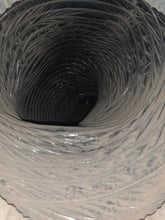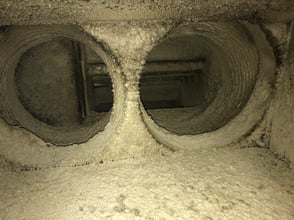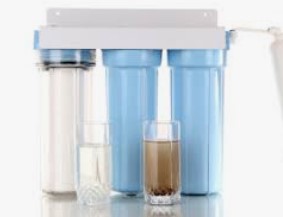When is mold not mold? Aka why Black Mold isn’t bad
Mold, the 4 letter word, gets blamed for many things such as ill health, odors, why people don’t use exercise equipment. Ok the last one I made up. But seriously mold is a common suspect when people think something is wrong. A few thousand mold inspections later, we can say with a high degree of certainty that:
- Not all discoloration is mold
- Not every smell is mold
- And there is no mold called black mold.
Two case studies where mold was suspected but was not present.
If you are living somewhere and you are having health issues or smell a weird odor, you will finger point that the problem is mold. For sure anyone can have a reaction when exposed to mold, but a common denominator is mold or should I say active mold growth is the musty odor associated with mold. The musty odor is the off gassing of active mold growth.
Case Study 1 Bathroom odor and mold is suspected.
Last Spring we did a remodel on our 2nd bathroom (new flooring, vanity and sink, and vent) and a short time later, there started to be a weird smell at times, which seemed to be coming from the sink water. It’s not all the time, but sometimes the smell is stronger than at other times. And sometimes it smells like rotten eggs.
Pro Tip
Rotten eggs is a sulfur related smell not mold.
This prompted me to call a plumber. They spent 1 ½ hours trying to recreate the smell, and ended up spraying mold spray in both the sink and shower overflows. The smell then went away for a couple of weeks, but the smell has since returned. My older daughter, when home from college, seems to notice it more and says that she has started to get headaches now when she’s home.
Pro Tip
Mold is a musty odor, and the fact that odor went away after a disinfectant was applied to the drain lines indicates that there was something happening in the piping, not behind a wall.
A DIY investigation of a sulfur odor source can take the following approach:
Confirm smell is from the water or the drain. Test this by fill a glass with water from the cold tap and take it outside to smell it. Repeat with hot water. . If there is odor in both samples, there is a high chance that the contamination is in the water supply. If the smell is only present in the hot water, the hot water heater maybe the source. If there is no smell in either sample, the likely source is the drain
A sewer vent blockage can interfering with the drain water flow (drainage from the toilet, sink or bath shower drain) creating pressure that pushes sewer gas through the sink trap. (if you note gurgling sounds and slow draining. The blockage may be caused by an obstruction in the waste line). You could also have a blockage from the vent stack opening on the roof, this is a little harder to inspect so always start with the easier approach.
In this circumstance, the owner had renovation performed in the bathroom, so since no odor was present prior to this work, the cause is likely tied to the work. Sometimes when plumbing is renovated a pipe that was no longer necessary may have been capped off, allowing anaerobic bacteria to thrive, which can produce a sulfur smell or technically a hydrogen sulfide gas. You see if no water is flowing through the capped off pipe, anaerobic bacteria can flourish since water is unable to flow through the dead pipe. The solution is to cut the dead leg out of the plumbing.
Bottom line a sulfur smell is not a mold smell and some DIY research and a competent plumber, the problem can be addressed.
Case Study 2 - Residents have health issue, allergies generally. They did mention research on causes of allergies and finds that mold is a cause so they wanted a mold inspection with testing.
In this situation there were five people in the home that complained of allergies. There were no specific areas of the house where the allergies were more severe and there were no must odors noted in the house by any of the residents.
We take health concerns seriously and without a specific area of the home, we evaluated the entire home and acquired nine air samples throughout the home. Air testing is performed where people live, so bedrooms, family room & entertainment areas.
Our inspection found no visible mold growth, no musty odors or evidence of water damage. Now we observed many other things, but nothing that would be a mold trigger. The air tests came up clean relative to mold (basically normal fungal ecology) but all samples had a higher debris rating than would be considered usual.
The home was about 3500 sq. ft. and about 10 years old. We observed while the home was not falling apart, there were visible layers of dust throughout the house on flat surfaces. The home had multiple cats and each bedroom had a cat bed and some form of scratching post. The air filters for the HVAC system were all in need of replacement (there were two units) and none had a date of last replacement. The home also had many candles they burn as well as scented vaporizers. Both can affect indoor air quality and not in a good way.
Our conclusions were that dust and airborne compounds and particulate can be an irritant and people can develop allergies to cats. The recommendation was a new cleaning service and thorough cleaning of the dwelling, replacing air filters every 3 months and removing cats beds from the bedrooms. Shocker, the allergy complaints went away.


Examples of dirty. dusty ducts work.
So not every mold compliant is actually a mold problem.
Do you have mold questions?
Looking for expert advice?


